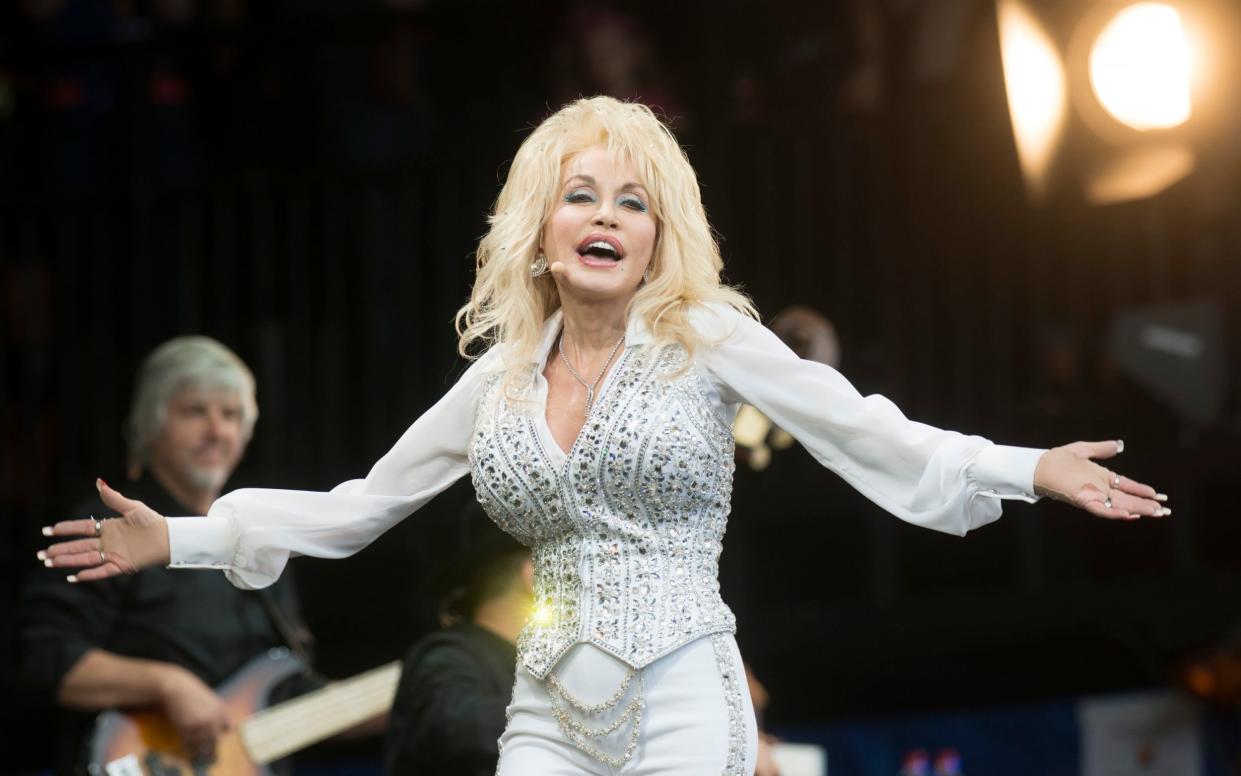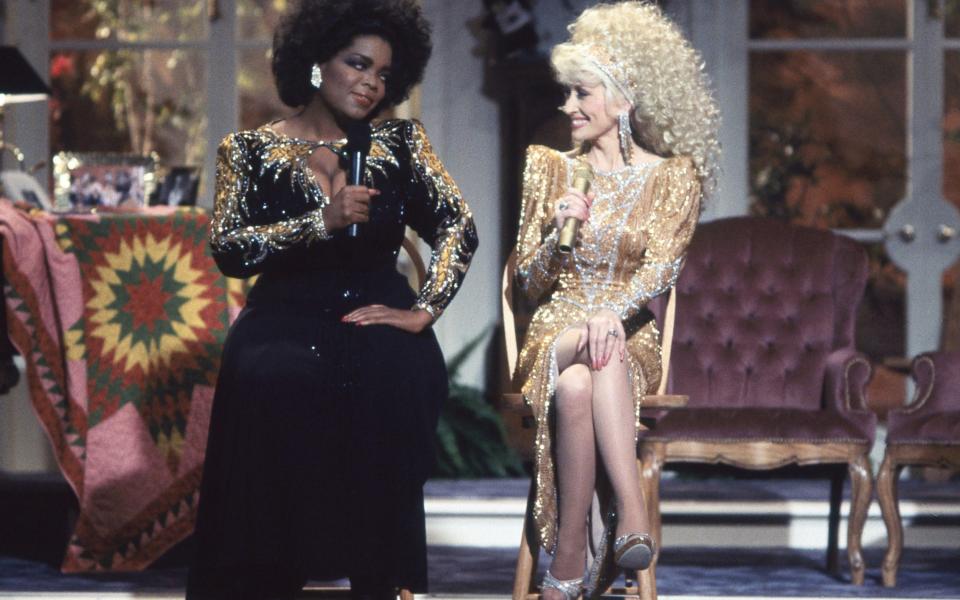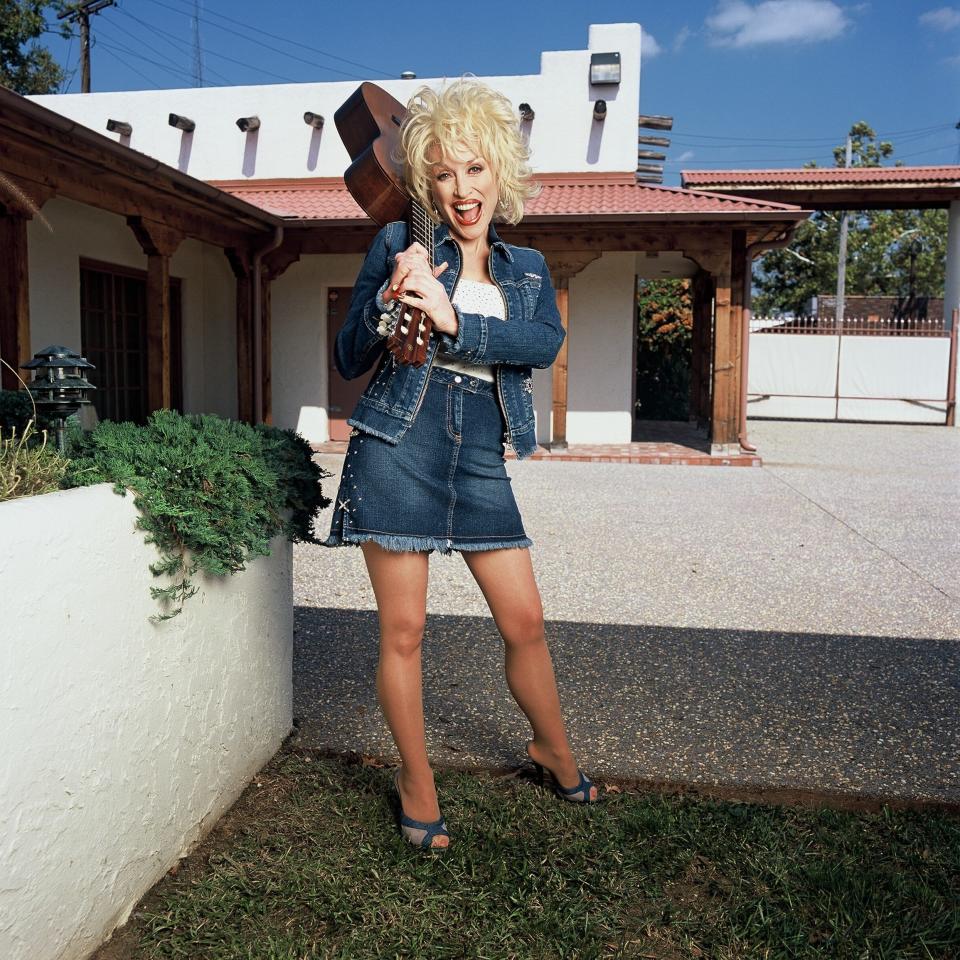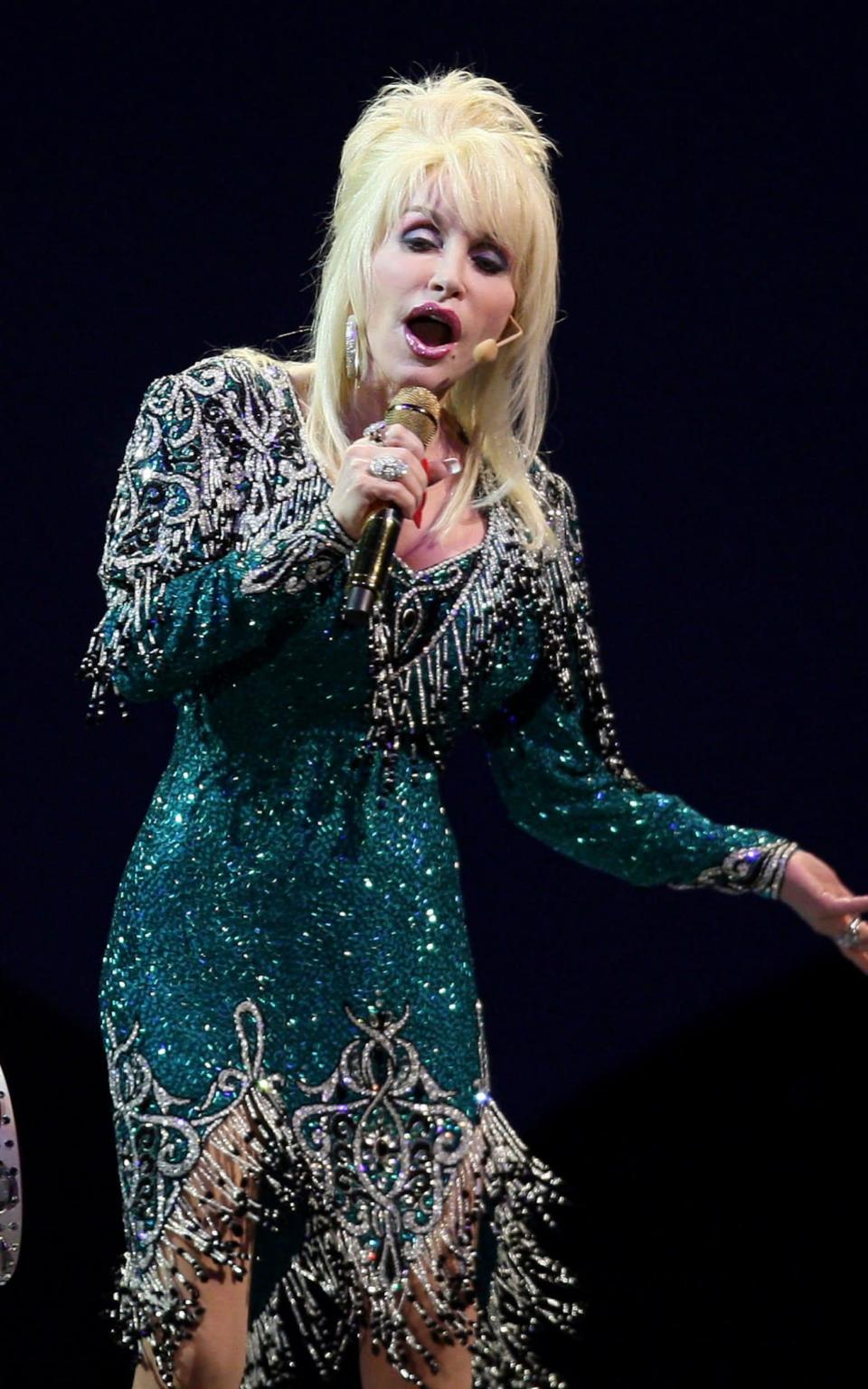Why Dolly Parton's 'trashy' style has more substance than you might think

- Oops!Something went wrong.Please try again later.
If I mention Dolly Parton, what comes to mind? Maybe a vision of bouffant, blonde hair and a skin-tight, bejeweled catsuit? (Probably with some metallic fringing somewhere about the place?) That famous, plaintive voice imploring Jolene to leave her man alone, or musing on the relentless capitalist grind of working 9 to 5? One of her pithy quips like “it costs a lot of money to look this cheap”?
A glittering fixture in America’s cultural landscape, Dolly Parton’s larger than life presence is easily conjured via a few key songs, an instantly recognisable image, and a good sprinkling of diamante.
This week though Parton’s name comes with another association. The 74-year-old actor and country musician has hit the news for helping to fund Moderna’s efforts to create a Covid-19 vaccine. Parton’s generous donation of $1 million (£750,000) to the Vanderbilt University Medical Center in Nashville, one of the trial sites for the vaccine, was announced back in April but has now garnered renewed attention in light of Moderna revealing that their efforts have resulted in a vaccine that looks to be nearly 95% effective.
Some voiced bemused surprise at the news, as though the clash of cutting edge medicine and America’s country music sweetheart were too confounding in the same sentence. But to anyone who knows, well, anything about Dolly Parton her presence on the list of significant donors isn’t a shock.

In fact, it’s perfectly in keeping with a public figure who has maintained a serious commitment to philanthropy alongside her ever-revolving production of hit singles, albums, books, TV shows, musicals, film soundtracks, and Christmas specials over the decades. After all, this is the same woman who set up Dolly Parton’s Imagination Library in 1995 in order to gift free books to preschool children (they now send out more than 1 million books monthly), and gave more than $8 million to families who lost their homes in the Great Smoky Mountain wildfires in Tennessee in 2016.
Dolly Parton’s whole modus operandi has always been about confounding expectation though.
Take her style. For years Parton’s maximalism - often rivaling Liberace in the sparkle stakes - and boldly buxom femininity raised eyebrows and regularly saw her dismissed as ditsy or insubstantial.
It was a carefully cultivated choice though. Growing up as one of 12 siblings in a cabin in rural East Tennessee, Parton has talked at length not only about the poverty she experienced during a childhood that was “dirt poor” and “rich in love,” but also the way her upbringing influenced the decisions she made around how to fashion herself as an adult. Her clothing choices remain deeply embedded in the country music tradition she came from – think of all that denim and fringing, as well as the check shirts tied at the waist – whilst also drawing inspiration from those she observed around her as a child.

One person in particular stood out. "I kind of patterned myself after what they called the town tramp in my hometown, when I was little,” she once told The Early Show. “There was this woman that was very much a loose woman. But I didn't know what that meant... She left a big impression on me, and I would talk about how beautiful she was and [people] would say, 'Oh, she's just trash.' And I thought, 'That's what I want to be when I grow up. I'm gonna be trash!' And that is how I look."
It’s a classic Dolly Parton anecdote: funny, self-deprecating, aiming to see the humanity where others might revert to judgment. It also perfectly summarizes the subversion at the heart of her OTT wardrobe.
Cast an eye over any list of her greatest outfit hits and it’ll likely feature long red nails, Seventies frills, sequined dresses, plunging necklines, cowboy boots, sparkly waistcoats accentuating her small waist and large bust (Parton is famously open about her plastic surgery, once saying “if something is bagging, sagging or dragging, I’ll tuck it, suck it, or pluck it!”), hoop earrings, big lashes, even bigger shoulders and huge blonde wigs.

So many photos of her performing feature sweeping sleeves draped over her guitar. When she played Glastonbury in 2014 she turned up in a rhinestone encrusted white pantsuit.
Parton has always embodied this unabashed, deliberately kitsch form of glamour. It’s trashy. It’s fun. It’s loud. It’s the kind of look that revels in the artificial – who else could enter a Dolly Parton lookalike contest and actually lose to a drag queen? – and proves that dress isn’t so much an indication of character as a chance to play at being whoever you like.
Reducing Parton to her clothes would be to massively underestimate her. With a hugely accomplished career, an incredible charitable record, and now, fingers crossed, a small but significant role to play in ending the pandemic, she has done – and directly improved – so much.

But it would be a mistake too to say that she has achieved any of this despite her image, as though it’s something to overcome or prove wrong. Instead what she’s worn has always been a sort of commentary on who we take seriously. It’s a choice that takes pleasure, as the musician has done frequently, in turning stereotypes on their head. To put it another way, there’s so much more to Dolly Parton’s rhinestones than first meets the eye - but it would be a mistake to see them as mere decoration either.
For more news, analysis and advice from The Telegraph's fashion desk, click here to sign up to get our weekly newsletter, straight to your inbox every Friday. Follow our Instagram @Telegraphfashion

